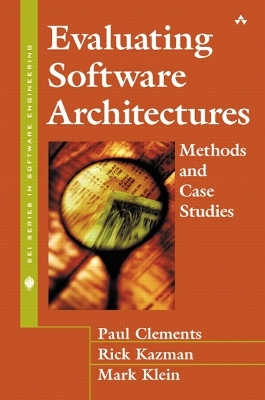SEI Series in Software Engineering
3 total works
Documenting Software Architectures
by Paul Clements, Felix Bachmann, Dr Len Bass, David Garlan, James Ivers, Reed Little, Paulo Merson, Robert Nord, and Judith Stafford
“This is an incredibly wise and useful book. The authors have considerable real-world experience in delivering quality systems that matter, and their expertise shines through in these pages. Here you will learn what technical debt is, what is it not, how to manage it, and how to pay it down in responsible ways. This is a book I wish I had when I was just beginning my career. The authors present a myriad of case studies, born from years of experience, and offer a multitude of actionable insights for how to apply it to your project.”
–Grady Booch, IBM Fellow
Master Best Practices for Managing Technical Debt to Promote Software Quality and Productivity
As software systems mature, earlier design or code decisions made in the context of budget or schedule constraints increasingly impede evolution and innovation. This phenomenon is called technical debt, and practical solutions exist. In Managing Technical Debt, three leading experts introduce integrated, empirically developed principles and practices that any software professional can use to gain control of technical debt in any software system.
Using real-life examples, the authors explain the forms of technical debt that afflict software-intensive systems, their root causes, and their impacts. They introduce proven approaches for identifying and assessing specific sources of technical debt, limiting new debt, and “paying off” debt over time. They describe how to establish managing technical debt as a core software engineering practice in your organization.
- Discover how technical debt damages manageability, quality, productivity, and morale–and what you can do about it
- Clarify root causes of debt, including the linked roles of business goals, source code, architecture, testing, and infrastructure
- Identify technical debt items, and analyze their costs so you can prioritize action
- Choose the right solution for each technical debt item: eliminate, reduce, or mitigate
- Integrate software engineering practices that minimize new debt
Managing Technical Debt will be a valuable resource for every software professional who wants to accelerate innovation in existing systems, or build new systems that will be easier to maintain and evolve.
Evaluating Software Architectures
by Paul Clements, Rick Kazman, and Mark Klein
The foundation of any software system is its architecture. Using this book, you can evaluate every aspect of architecture in advance, at remarkably low cost -- identifying improvements that can dramatically improve any system's performance, security, reliability, and maintainability. As the practice of software architecture has matured, it has become possible to identify causal connections between architectural design decisions and the qualities and properties that result downstream in the systems that follow from them. This book shows how, offering step-by-step guidance, as well as detailed practical examples -- complete with sample artifacts reflective of those that evaluators will encounter. The techniques presented here are applicable not only to software architectures, but also to system architectures encompassing computing hardware, networking equipment, and other elements. For all software architects, software engineers, developers, IT managers, and others responsible for creating, evaluating, or implementing software architectures.


